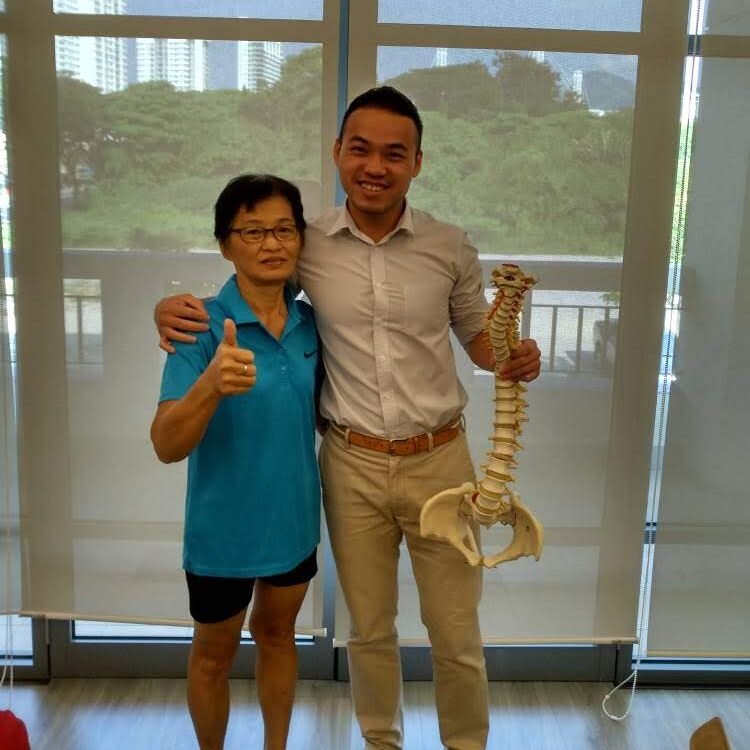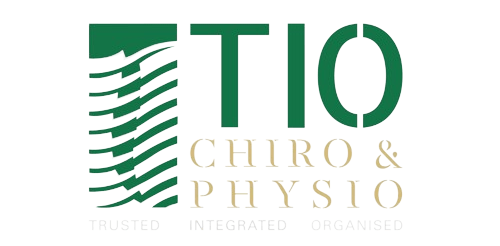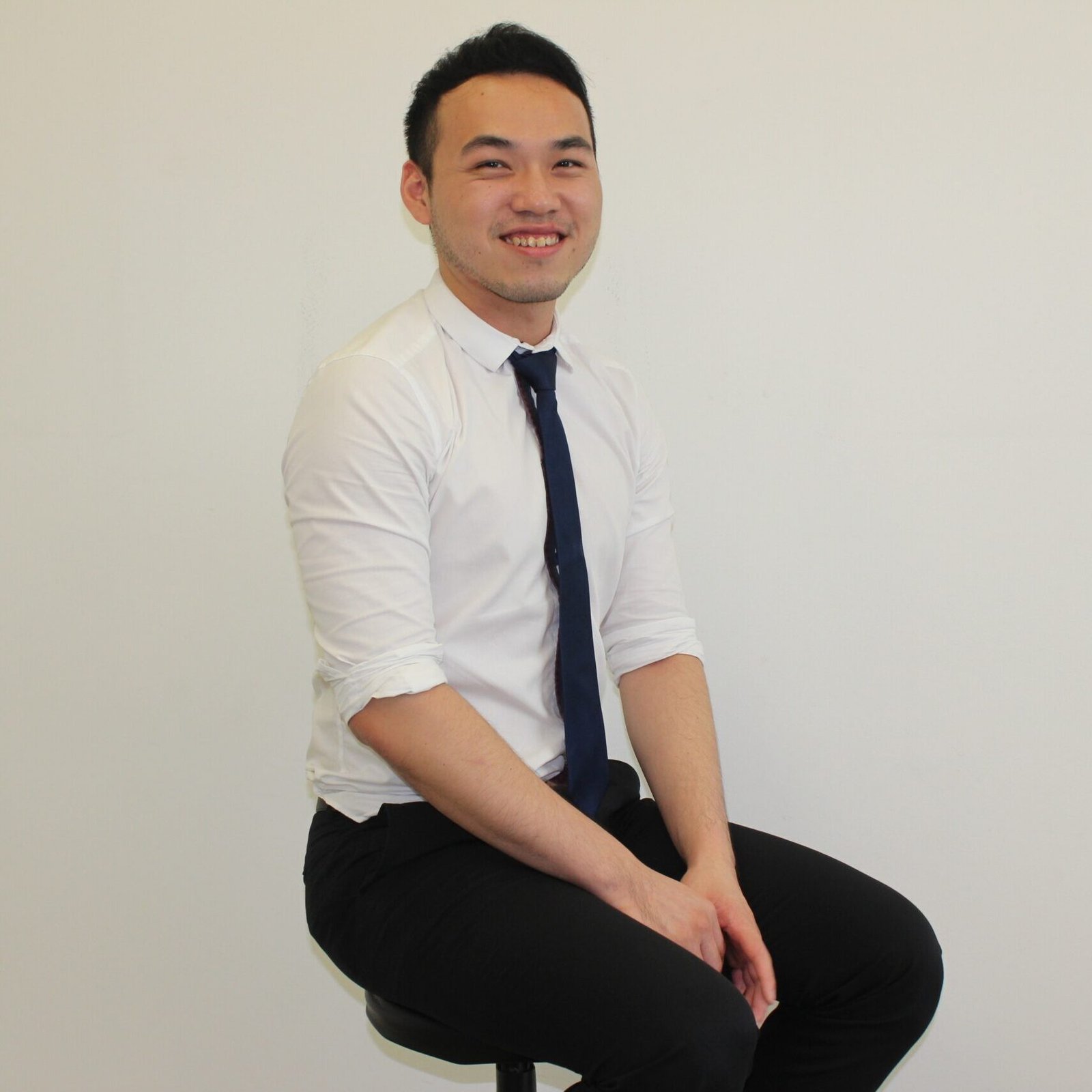
Does your child have uneven shoulders or a slight curve in their back? These may be early signs of scoliosis in children, a condition that affects the spine during growth. Left unchecked, scoliosis can progress quietly and impact posture, movement, and confidence.
At TIO Chiro & Physio’s our pediatric chiropractors have seen how early detection and gentle interventions can make a huge difference in a child’s long-term spinal health. This guide will help Malaysian parents understand what scoliosis looks like, what causes it, and when to seek help.
What Is Scoliosis?
 Scoliosis is a condition where the spine curves sideways, often in an “S” or “C” shape, instead of running straight down the back. It usually starts during late childhood or adolescence, right around the time kids hit their growth spurts. While it may look like poor posture at first, scoliosis is a structural change in the spine, not just a bad habit.
Scoliosis is a condition where the spine curves sideways, often in an “S” or “C” shape, instead of running straight down the back. It usually starts during late childhood or adolescence, right around the time kids hit their growth spurts. While it may look like poor posture at first, scoliosis is a structural change in the spine, not just a bad habit.
The most common form seen in children is idiopathic scoliosis, which means doctors aren’t exactly sure what causes it. Despite the mystery, what’s clear is that scoliosis can range from a mild curve (barely noticeable) to more severe forms that can affect how a child breathes or moves.
The tricky part? Many children with scoliosis feel no pain in the early stages. That’s why it’s important for parents to spot any subtle signs and consult a qualified practitioner who can treat scoliosis in Petaling Jaya for early evaluation and management.
Can Scoliosis Be Cured?
 Many parents ask a very natural question: can scoliosis be cured completely? The truth is, scoliosis in children can often be managed very effectively, especially when detected early — but a permanent “cure” depends on factors like the severity of the curve, the child’s age, and how their body responds to treatment. Mild cases may not require intensive care at all, while moderate curves can be significantly improved with non-surgical treatment like physiotherapy, scoliosis-specific exercises, or spinal adjustments. Severe cases may need bracing or surgery.
Many parents ask a very natural question: can scoliosis be cured completely? The truth is, scoliosis in children can often be managed very effectively, especially when detected early — but a permanent “cure” depends on factors like the severity of the curve, the child’s age, and how their body responds to treatment. Mild cases may not require intensive care at all, while moderate curves can be significantly improved with non-surgical treatment like physiotherapy, scoliosis-specific exercises, or spinal adjustments. Severe cases may need bracing or surgery.
The key takeaway is this: scoliosis isn’t a one-size-fits-all condition, and early screening gives your child the best shot at avoiding long-term issues.
How Scoliosis Develops in Kids
 In most children, scoliosis starts quietly. The most common form, idiopathic scoliosis, typically emerges during growth spurts, especially in late childhood or early adolescence. The term idiopathic simply means doctors don’t yet know the exact cause.
In most children, scoliosis starts quietly. The most common form, idiopathic scoliosis, typically emerges during growth spurts, especially in late childhood or early adolescence. The term idiopathic simply means doctors don’t yet know the exact cause.
What researchers do know is that scoliosis in children tends to progress faster during periods of rapid bone growth. That’s why it’s often detected between the ages of 10 and 15. In many cases, the curve may begin subtly via a slightly uneven waistline or one shoulder blade sticking out more than the other.
Over time, especially if left unmonitored, the spinal curve can worsen. This is why early screening matters: once the bones are fully grown, it becomes harder to correct the curve without more aggressive interventions.
Unlike scoliosis caused by trauma or illness, idiopathic scoliosis doesn’t usually stem from poor posture, heavy school bags, or too much screen time. Though these habits may add strain to an already misaligned spine.
How We Cure Scoliosis in Children at Tio Chiro & Physio
 While “curing” scoliosis may not always mean removing the curve entirely, slowing its progression and improving quality of life is very much achievable. Treatments typically focus on:
While “curing” scoliosis may not always mean removing the curve entirely, slowing its progression and improving quality of life is very much achievable. Treatments typically focus on:
- Monitoring the curve over time
- Exercise-based physiotherapy
- Postural retraining
- Paediatric chiropractic care
- In more advanced cases, bracing may be used to prevent worsening
How Common is It in Malaysia?
 According to the Journal of North American Spine Society, scoliosis affects roughly 2 to 3% of the global population, and Malaysia is no exception. The Malaysian Orthopaedic Journal claims scoliosis cases in children, particularly adolescent idiopathic scoliosis, are being diagnosed more frequently. 8,966 students aged 13 to 15 reported an adjusted prevalence of 2.55% for adolescent scoliosis
According to the Journal of North American Spine Society, scoliosis affects roughly 2 to 3% of the global population, and Malaysia is no exception. The Malaysian Orthopaedic Journal claims scoliosis cases in children, particularly adolescent idiopathic scoliosis, are being diagnosed more frequently. 8,966 students aged 13 to 15 reported an adjusted prevalence of 2.55% for adolescent scoliosis
However, many cases still go undetected until the curvature becomes more visible. This is partly due to the lack of symptoms in early stages, and sometimes due to confusion between scoliosis and poor posture. In Malaysia, urban areas like Petaling Jaya and Kuala Lumpur have better access to diagnostics and non-surgical scoliosis treatment options, but early screening remains a challenge in rural communities.
Early Signs Parents Should Watch Out For
 Scoliosis in children often develops silently, especially during growth spurts. Most parents won’t notice it at first, especially if their child isn’t complaining of pain. But early detection can make all the difference in treatment outcomes.
Scoliosis in children often develops silently, especially during growth spurts. Most parents won’t notice it at first, especially if their child isn’t complaining of pain. But early detection can make all the difference in treatment outcomes.
One of the most common red flags is uneven shoulders or hips. You might also notice your child’s clothes hanging unevenly or their head not aligning with the centre of the pelvis when they stand naturally. In more pronounced cases, one shoulder blade may appear more prominent than the other.
Another subtle sign is a visible curve in the spine when your child bends forward. This is often checked using the “Adam’s Forward Bend Test,” a quick screening method many school health programs use. While not a definitive diagnosis, it’s a good reason to seek a professional assessment.
If you notice any of these symptoms, or if the condition runs in the family, it’s a good idea to speak to a qualified chiropractor that specialises in Scoliosis.
Is Bad Posture to Blame?
One of the most common questions parents ask is whether poor posture causes scoliosis. The short answer? Not exactly.
While slouching, carrying heavy backpacks on one side, or spending long hours hunched over a screen might look like they could “bend the spine,” bad posture doesn’t cause scoliosis. What it can do, however, is make an existing spinal curve look worse, especially when a child is already dealing with muscular imbalances or asymmetry.
That said, researchers are actively studying possible contributing factors like growth spurts, neuromuscular conditions, and family history, but there is still no single proven cause. What’s important is early detection and having a proper evaluation by a qualified specialist.
What Happens If It’s Left Untreated?
Scoliosis in children doesn’t always stay mild. If it’s left undiagnosed or untreated during key growth years, the spinal curve can worsen significantly. While some mild curves remain stable, moderate to severe scoliosis can lead to long-term complications that affect a child’s health, mobility, and confidence.
Chronic Back Pain Later in Life
Children with untreated scoliosis are more likely to experience persistent back pain as adults. The uneven pressure on joints and muscles can lead to wear and tear over time, making everyday activities uncomfortable.
Reduced Lung Capacity and Breathing Issues
As the curve becomes more severe, it can rotate the rib cage and compress the lungs. This may limit lung capacity, making sports and even simple physical activity harder for a child or teen.
Postural Imbalances Affecting Movement
Untreated scoliosis can create visible imbalances like uneven shoulders or hips that affect gait, balance, and coordination. These changes can lead to secondary issues such as muscle strain or joint pain.
Emotional and Self-Esteem Challenges
Beyond the physical impact, scoliosis can influence how a child feels about their body. Teenagers, in particular, may struggle with body image or self-confidence if the curve becomes noticeable.
Limited Treatment Options Later On
Perhaps the most important consequence of leaving scoliosis untreated is how it limits non-surgical care. Once a spinal curve reaches 40–50 degrees, non-invasive treatments like physiotherapy or chiropractic care become less effective, and surgery may be recommended.
When Should You See a Specialist?
 The earlier scoliosis is detected, the better the outcome. Parents often wait until the curve becomes visibly obvious. But by then, treatment options may be more limited.
The earlier scoliosis is detected, the better the outcome. Parents often wait until the curve becomes visibly obvious. But by then, treatment options may be more limited.
So when should you get your child assessed? Here are some good indicators:
- If you’ve noticed uneven shoulders, ribs, or hips
- If your child complains of frequent backaches, even at a young age
- If there’s a visible tilt or lean when they stand or walk
- If there’s a family history of spinal issues
Even if you’re unsure, a simple, non-invasive spinal screening by a qualified practitioner can help put your mind at ease. Waiting too long may allow the curve to worsen, especially during adolescence, when bones grow rapidly. So when in doubt, trust your gut and get it checked.
Why Should You Choose TIO Chiro & Physio?
As a trusted physiotherapy clinic in Petaling Jaya, TIO Chiro & Physio is committed to holistic care that prioritizes patient comfort and long-term wellness. Here’s why patients choose us:
Expert Practitioners
Our team has extensive experience in chiropractic and physiotherapy, ensuring safe and effective treatments.
Customized Care Plans
We understand that each patient is unique. Our percussive therapy sessions are designed to meet your specific needs.
Convenient Location
Situated in Petaling Jaya, we are easily accessible for locals, professionals, and families.
Holistic Philosophy
Beyond pain relief, we focus on improving your overall health and quality of life.
Best Physiotherapy in Petaling Jaya
Frequently Asked Questions About Scoliosis in Children
In most cases, scoliosis doesn’t just go away on its own. While some mild curves may remain stable as a child grows, many will worsen without proper monitoring or care. Early intervention, even if it’s just regular check-ups, can prevent it from becoming more serious.
There’s no such thing as “too late” but the earlier, the better. The most effective time to treat scoliosis is before the bones fully mature, typically before age 16. After that, treatment may be more about managing symptoms than correcting the curve.
It’s rare, but mild scoliosis can sometimes remain stable and not require intervention. However, most children with scoliosis won’t “grow out of it” especially if the curve is moderate or worsening. Regular follow-ups help ensure it doesn’t get worse during growth spurts.
Low-impact, core-strengthening activities like badminton, swimming, and even cycling are excellent for children with scoliosis. These sports promote balance, posture control, and flexibility without overloading the spine. Swimming is especially beneficial due to its full-body engagement and supportive environment. While badminton and cycling are widely accessible in Malaysia and easy to pick up, sports that involve one-sided movement like tennis or bowling may need to be approached with caution, depending on the child’s spinal condition.
Scoliosis isn’t inherited the same way as eye color, but genetics do play a role. If someone in the family has scoliosis, the chances of a child developing it are higher, making early screening even more important for those with a family history.
Physiotherapist Near Me in PJ
Take the First Step Toward a Straighter, Healthier Spine
If you’re noticing signs of scoliosis in your child or simply want a professional opinion, don’t wait! Early intervention can make all the difference and at TIO Chiro & Physio in Petaling Jaya, we offer child-friendly scoliosis assessments and tailored non-surgical treatment options designed to support your child’s growth and mobility. Book a consultation today to speak with our experienced team and get the clarity and care your family deserves.




